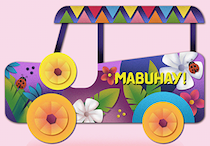Welcome to November. November is often referred to as a transitional month — say goodbye to fall, because winter is coming. Louisa May Alcott, who wrote Little Women, put a line in that book that November is the most disagreeable month in the whole year. That may be true, but we seem to have turned it into a social month with community suppers and feasts of thanksgiving — and — the “election” month.
The month gets its name from the Latin word novem, which means “nine, because November was the ninth month of the early Roman calendar.
November’s full Moon is traditionally called the Beaver Moon because in the Colonial Era, this was the month to set beaver traps, before the swamps froze and beavers retired to their lodges, so the colonists could ensure a supply of warm winter furs.
This month’s full Moon occurs on Monday, November 27.
The Anglo-Saxons knew November by two names — the first was Wind Month because the wind would start to chill the bones. It was also known a Blood Month, because the cattle went to slaughter in November.
In Finland, the word for November is Marraskuu, meaning the month of the dead. But the name is misleading — the reason for the name is because all the seasonal trees and plants lose their leaves or die in the month of November.
November is the only month that Shakespeare never mentioned in all of his plays and sonnets…. I don’t know why.
November is the month when we turn the clocks back and we get an extra hour of sleep. A lot of people aren’t happy about this practice and there is a growing consensus that changing the clocks twice isn’t necessary.
A significant event happened in the month of November in 1957. The first living creature launched into space wasn’t a human, but a dog. On November 3rd, 1957 Russia launched Sputnik II into space with Laika, a dog, on board. The sad part about the mission — even sadder if you’re a dog lover — is that the trip was one way.
Another sad, or tragic, event that occurred in November was the assassination of President John F. Kennedy in Dallas, Texas on November 22, 1963.
November is probably best known, in the US at least, for Thanksgiving. Since 1621, the fourth Thursday in November has served as a holiday to gather with friends and family and give thanks for the blessings in our lives — and — eat turkey.
In addition to Thanksgiving, November has many special food days… November 3rd is Sandwich Day, November 6th is Nacho Day, the 14th is Pickle Day, the 28th is French Toast Day, and November 29th is Lemon Cream Pie Day.
November 11th is a very important day — we remember the veterans we have lost in past wars and thank the military of today for protecting out country.
In preparation for Christmas, I guess, two of the most popular toys were released in November — the board game Monopoly (1935) and the Easy-Bake Oven in 1963.
And I should mention that the first x-ray machine was invented in Germany in November, 1895 and King Tut’s Tomb was discovered on November 4th, 1922.
As I mentioned earlier, November has become knows as election month in the US. Why November? The farmers. Not wanting to disturb the planting, growing, or harvest seasons, the month of November was chosen as the most logical month for everyone to be able to vote.
There’s no doubt that November is a special month — it ushers in the holiday season and encourages us to focus on our important core values….. and don’t forget to vote — it’s a privilege, not everyone has.
— 30 —

